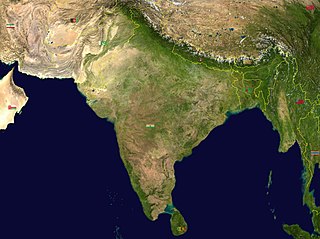 W
WSouth Asia is considered to include seven regions/countries. The lists of butterflies found in each individual country are given on these pages:List of butterflies of India List of butterflies of Pakistan List of butterflies of Bangladesh List of butterflies of Bhutan List of butterflies of Sri Lanka List of butterflies of Nepal List of butterflies of the Maldives
 W
WThe Central Asian Flyway (CAF), Central Asian-Indian Flyway, or Central Asian-South Asian Flyway is a flyway covering a large continental area of Eurasia between the Arctic Ocean and the Indian Ocean and the associated island chains. The CAF comprises several important migration routes of waterbirds, most of which extend from the northernmost breeding grounds in Siberia to the southernmost non-breeding wintering grounds in West Asia, India, the Maldives and the British Indian Ocean Territory.
 W
WThe Asian black bear, also known as the Asiatic black bear, moon bear and white-chested bear, is a medium-sized bear species native to Asia that is largely adapted to an arboreal lifestyle. It lives in the Himalayas, in the northern parts of the Indian subcontinent, the Korean Peninsula, northeastern China, the Russian Far East, the Honshū and Shikoku islands of Japan, and Taiwan. It is classified as vulnerable by the International Union for Conservation of Nature (IUCN), mostly because of deforestation and hunting for its body parts. Although largely herbivorous, Asian black bears can be very aggressive toward humans, who frequently trap or kill them for traditional medicine.
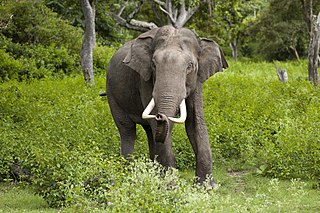 W
WThe Asian elephant, also known as the Asiatic elephant, is the only living species of the genus Elephas and is distributed throughout the Indian subcontinent and Southeast Asia, from India in the west, Nepal in the north, Sumatra in the south, and to Borneo in the east. Three subspecies are recognised—E. m. maximus from Sri Lanka, E. m. indicus from mainland Asia and E. m. sumatranus from the island of Sumatra.
 W
WThe barasingha, also called swamp deer, is a deer species distributed in the Indian subcontinent. Populations in northern and central India are fragmented, and two isolated populations occur in southwestern Nepal. It is extinct in Pakistan and Bangladesh.
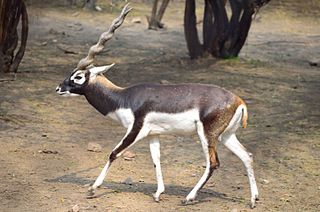 W
WThe blackbuck, also known as the Indian antelope, is an antelope native to India, Nepal, and Pakistan. It inhabits grassy plains and slightly forested areas with perennially water sources. It stands up to 74 to 84 cm high at the shoulder. Males weigh 20–57 kg (44–126 lb), with an average of 38 kg (84 lb). Females are lighter, weighing 20–33 kg (44–73 lb) or 27 kg (60 lb) on average. Males have 35–75 cm (14–30 in) long, ringed horns, though females may develop horns as well. The white fur on the chin and around the eyes is in sharp contrast with the black stripes on the face. The coats of males show a two-tone colouration; while the upper parts and outsides of the legs are dark brown to black, the underparts and the insides of the legs are white. Females and juveniles are yellowish fawn to tan. The blackbuck is the sole member of the genus Antilope and was scientifically described by Carl Linnaeus in 1758. Two subspecies are recognized.
 W
WThe Asiatic cheetah, also known as Iranian cheetah, is a Critically Endangered cheetah subspecies surviving today only in Iran. It once occurred from the Arabian Peninsula and the Near East to the Caspian region, Kyzylkum Desert and India, but has been extirpated there during the 20th century.
 W
WThe chital, also known as spotted deer, chital deer, and axis deer, is a species of deer that is native to the Indian subcontinent. It was first described by German naturalist Johann Christian Polycarp Erxleben in 1777. A moderate-sized deer, male chital reach nearly 90 cm (35 in) and females 70 cm (28 in) at the shoulder. While males weigh 30–75 kg (66–165 lb), the lighter females weigh 25–45 kg (55–99 lb). It is sexually dimorphic; males are larger than females, and antlers are present only on males. The upper parts are golden to rufous, completely covered in white spots. The abdomen, rump, throat, insides of legs, ears, and tail are all white. The antlers, three-pronged, are nearly 1 m (3.3 ft) long.
 W
WColuber ventromaculatus, the glossy-bellied racer or Hardwicke's rat snake or Gray's rat snake, is a species of rat-snake or racer.
 W
WConus imperialis, common name the imperial cone, is a species of sea snail, a marine gastropod mollusk in the family Conidae, the cone snails and their allies.
 W
WThe sarus crane is a large non-migratory crane found in parts of the Indian subcontinent, Southeast Asia, and Australia. The tallest of the flying birds, standing at a height up to 1.8 m, they are a conspicuous species of open wetlands in south Asia, seasonally flooded Dipterocarp forests in Southeast Asia, and Eucalyptus-dominated woodlands and grasslands in Australia.
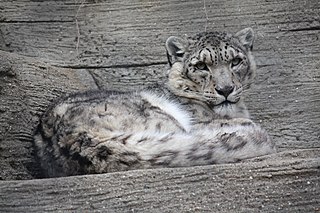 W
WPakistan's native fauna reflect its varied climatic zones.
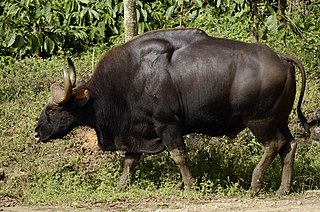 W
WThe gaur, also known as Indian bison, is native to South and Southeast Asia and has been listed as Vulnerable on the IUCN Red List since 1986. The global population has been estimated at maximum 21,000 mature individuals by 2016. It declined by more than 70% during the last three generations, and is extinct in Sri Lanka and probably also in Bangladesh. Populations in well-protected areas are stable and increasing.
 W
WColuber ventromaculatus, the glossy-bellied racer or Hardwicke's rat snake or Gray's rat snake, is a species of rat-snake or racer.
 W
WThe grey junglefowl, also known as Sonnerat's junglefowl, is one of the wild ancestors of domestic fowl together with the red junglefowl and other junglefowls.
 W
WThe Indian black turtle or Indian pond terrapin is a species of medium-sized freshwater turtle found in South Asia.
 W
WThe Indian chameleon is a species of chameleon found in Sri Lanka, India, and other parts of South Asia. Like other chameleons, this species has a long tongue, feet that are shaped into bifid claspers, a prehensile tail, independent eye movement, and the ability to change skin colour. They move slowly with a bobbing or swaying movement and are usually arboreal. Strangely, they do not choose the background colour and may not even be able to perceive colour differences. They are usually in shades of green or brown or with bands. They can change colour rapidly and the primary purpose of colour change is for communication with other chameleons and for controlling body temperature by changing to dark colours to absorb heat.
 W
WThe Indian cobra, also known as the spectacled cobra, Asian cobra, or binocellate cobra, is a species of the genus Naja found, in India, Pakistan, Bangladesh, Sri Lanka, Nepal, and Bhutan, and a member of the "big four" species that inflict the most snakebites on humans in India. It is distinct from the king cobra which belongs to the monotypic genus Ophiophagus. The Indian cobra is revered in Indian mythology and culture, and is often seen with snake charmers. It is now protected in India under the Indian Wildlife Protection Act (1972).
 W
WThe Indian rhinoceros, also called the Indian rhino, greater one-horned rhinoceros or great Indian rhinoceros, is a rhinoceros species native to the Indian subcontinent. It is listed as Vulnerable on the IUCN Red List, as populations are fragmented and restricted to less than 20,000 km2 (7,700 sq mi). Moreover, the extent and quality of the rhino's most important habitat, the alluvial Terai-Duar savanna and grasslands and riverine forest, is considered to be in decline due to human and livestock encroachment. As of 2019, a total of 2100-2200 mature individuals were estimated to live in the wild.
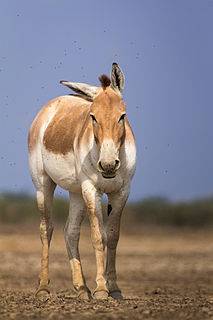 W
WThe Indian wild ass, also called the Ghudkhur, Khur or Indian onager in the local Gujarati language, is a subspecies of the onager native to Southern Asia.
 W
WThe Indian leopard is a leopard subspecies widely distributed on the Indian subcontinent. The species Panthera pardus is listed as Vulnerable on the IUCN Red List because populations have declined following habitat loss and fragmentation, poaching for the illegal trade of skins and body parts, and persecution due to conflict situations.
 W
WLiostenogaster flavolineata is an insect that belongs to the wasp family Vespidae. This hairy-faced hover wasp species is predominantly found in South Asian rain forests, especially in Malaysia. Individual colonies of this species are very small, but aggregations of nests allow for interactions between many smaller colonies. Some worker wasps, known as "helpers", will move between multiple nests in an attempt to improve their position in the dominance hierarchy. Its nests are pale-colored and are usually built with mud. Liostenogaster flavolineata is one of the most studied species in the Stenogastrinae.
 W
WThe Turkestan lynx is a subspecies of Eurasian lynx native to Central Asia. It is also known as Central Asian lynx, Tibetan lynx or Himalayan lynx. It is widespread from west in Central Asia, from South Asia to China and Mongolia. There are 27,000 mature individuals in China as of 2013. It is proposed for the Turkestan lynx to be listed as Vulnerable in Uzbekistan.
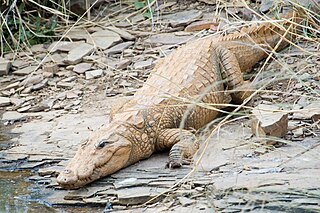 W
WThe mugger crocodile, also called marsh crocodile, broad-snouted crocodile and mugger, is a crocodilian native to freshwater habitats from southern Iran to the Indian subcontinent. It is extinct in Bhutan and Myanmar and has been listed as Vulnerable on the IUCN Red List since 1982.
 W
WThe nilgai or blue bull is the largest Asian antelope and is ubiquitous across the northern Indian subcontinent. The sole member of the genus Boselaphus, the species was described and given its binomial name by German zoologist Peter Simon Pallas in 1766. The nilgai stands 1–1.5 metres (3.3–4.9 ft) at the shoulder; males weigh 109–288 kilograms (240–635 lb), and the lighter females 100–213 kilograms (220–470 lb). A sturdy thin-legged antelope, the nilgai is characterised by a sloping back, a deep neck with a white patch on the throat, a short crest of hair along the neck terminating in a tuft, and white facial spots. A column of pendant coarse hair hangs from the dewlap ridge below the white patch. Sexual dimorphism is prominent – while females and juveniles are orange to tawny, adult males have a bluish-grey coat. Only males possess horns, 15–24 centimetres (5.9–9.4 in) long.
 W
WPlatyceps ventromaculatus, the glossy-bellied racer, is a species of snake in the family Colubridae.
 W
WPython molurus is a large, nonvenomous python species native to tropical and subtropical regions of the Indian subcontinent and Southeast Asia. It is known by the common names Indian python, black-tailed python, Indian rock python, and Asian rock python. It is generally lighter colored than the Burmese python and reaches usually 3 m (9.8 ft).
 W
WThe red panda is a mammal species native to the eastern Himalayas and southwestern China. It is listed as Endangered on the IUCN Red List because the wild population is estimated at fewer than 10,000 mature individuals and continues to decline due to habitat loss and fragmentation, poaching, and inbreeding depression. Despite its name, it is not closely related to the giant panda.
 W
WThe small-spotted lizard is a species of lizard. It is found in the following countries: Morocco, Algeria, Tunisia, Libya, Egypt, Sinai, Israel, Saudi Arabia, Iran, India, S. Turkmenistan, N. Africa, Afghanistan, Pakistan, Senegal, Niger, Sudan, Syria. Type locality: Egypt
 W
WThe South Asian river dolphin is an endangered freshwater or river dolphin found in the region of Indian subcontinent, which is split into two subspecies, the Ganges river dolphin and the Indus river dolphin. The Ganges river dolphin is primarily found in the Ganges and Brahmaputra Rivers and their tributaries in India, Bangladesh, and Nepal, while the Indus river dolphin is now found only in the main channel of the Indus River in Pakistan and active channels connected to it between the Jinnah and Kotri barrages, and in the River Beas in Punjab in India. From the 1970s until 1998, they were regarded as separate species; however, in 1998, their classification was changed from two separate species to subspecies of a single species. The Ganges river dolphin has been recognized by the government of India as its National Aquatic Animal and is the official animal of the Indian city of Guwahati. The Indus river dolphin has been named as the National Mammal of Pakistan.
 W
WThe tiger is the largest extant cat species and a member of the genus Panthera. It is most recognisable for its dark vertical stripes on orange-brown fur with a lighter underside. It is an apex predator, primarily preying on ungulates such as deer and wild boar. It is territorial and generally a solitary but social predator, requiring large contiguous areas of habitat, which support its requirements for prey and rearing of its offspring. Tiger cubs stay with their mother for about two years, before they become independent and leave their mother's home range to establish their own.
 W
WThe Ussuri dhole, also known as the Indian dhole, Eastern Asiatic dhole, Chinese dhole or Southern dhole, is the nominate subspecies of the dhole native to East Asia. It is widespread in the Indian subcontinent and the Indochinese Peninsula. The Ussuri dhole is also native to China, however it is probably extinct in most of its ranges in China, as well as in Mongolia and the Russian Far East.